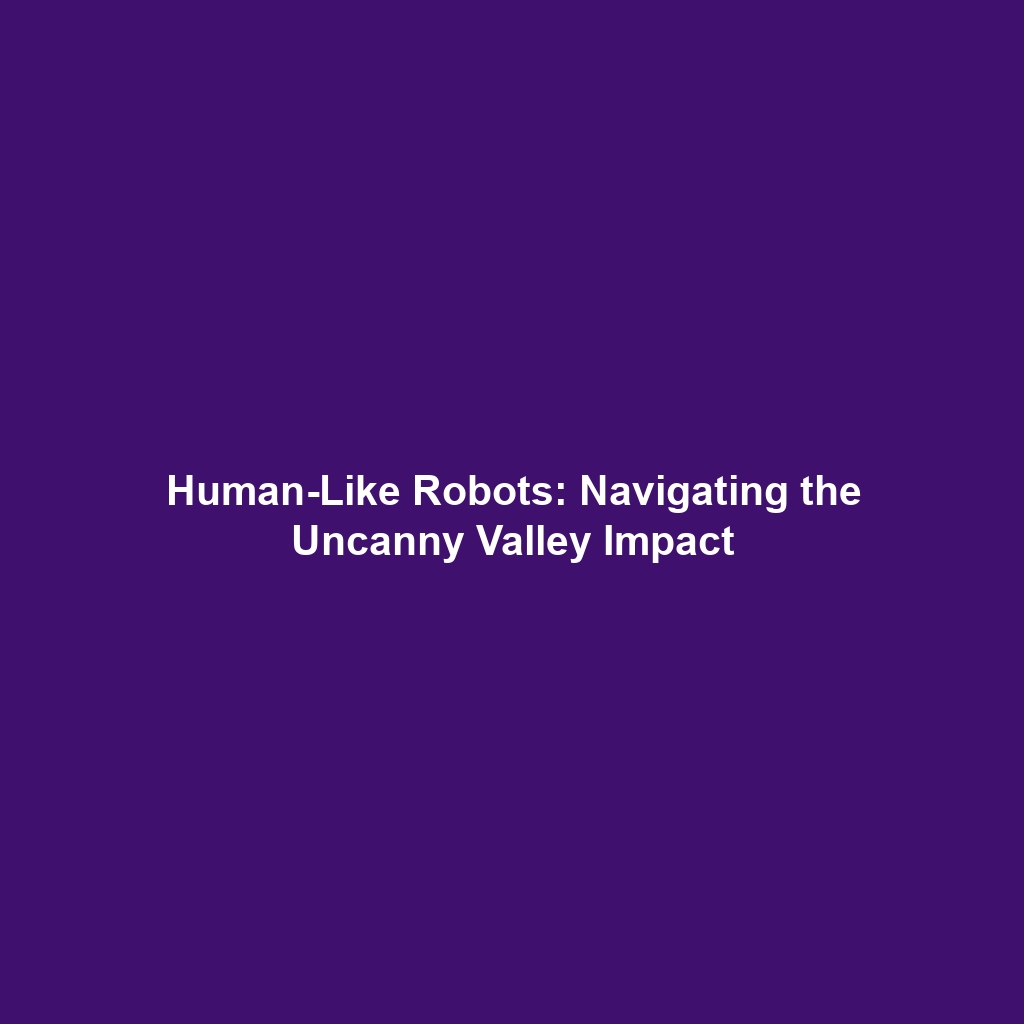Innovations in Soft Robotics: Enhancing Adaptability in Humanoid Robots
Introduction
Innovations in soft robotics and flexible actuators are revolutionizing the design and functionality of humanoid robots. These advancements enable robots to be more adaptable to different environments, addressing the challenges posed by traditional rigid designs. As humanoid robots are increasingly integrated into diverse fields such as healthcare, disaster response, and manufacturing, understanding these innovations becomes crucial. In this article, we delve into the significance of soft robotics, flexible actuators, and their role in enhancing the adaptability of humanoid robots.
Key Concepts
Understanding Soft Robotics
Soft robotics is a subfield focused on creating robots from compliant materials, allowing for greater flexibility and adaptability in motion and interaction. Key principles include:
- Material Science: Utilizing materials like silicone and soft polymers that mimic biological tissues.
- Bioinspired Design: Mimicking the movement and flexibility of creatures found in nature.
- Adaptive Control Systems: Programming robots to adjust their behaviors based on environmental feedback.
Flexible Actuators in Robotics
Flexible actuators are essential components in soft robotics that enable motion. Unlike traditional rigid actuators, they allow for:
- Higher Degrees of Freedom: Facilitating complex and versatile movements.
- Responsive Interaction: Adapting to different tasks and surfaces for improved functionality.
Applications and Real-World Uses
The application of innovations in soft robotics and flexible actuators in humanoid robots can be observed across various sectors:
- Healthcare: Soft robotic systems assist in rehabilitation, providing gentle support to patients.
- Disaster Response: Flexible humanoid robots are deployed in hazardous environments for search and recovery operations.
- Manufacturing: Adaptable robots can adjust to changes in tasks and materials on production lines.
These examples showcase how innovations in soft robotics significantly enhance the operational efficacy of humanoid robots in real-world scenarios.
Current Challenges
While progress in soft robotics is impressive, several challenges remain:
- Material Durability: Soft materials may not withstand harsh conditions.
- Control Complexity: Developing effective control systems for flexible movements is challenging.
- Cost-Effectiveness: High manufacturing costs for soft robotic systems limit widespread adoption.
Future Research and Innovations
Research continues to evolve, focusing on groundbreaking innovations. Future studies may involve:
- Next-Gen Materials: Developing more robust soft materials that retain flexibility.
- AI Integration: Enhancing robots with artificial intelligence for improved adaptability and learning.
- Miniaturization: Creating smaller, efficient soft robots that can perform intricate tasks.
Conclusion
Innovations in soft robotics and flexible actuators play a pivotal role in making humanoid robots more adaptable to differing environments. As these technologies advance, they promise not only improved functionality but also broader applications across sectors. For further insights into the world of robotics, explore more on robotic advancements and the future of humanoid robots.









